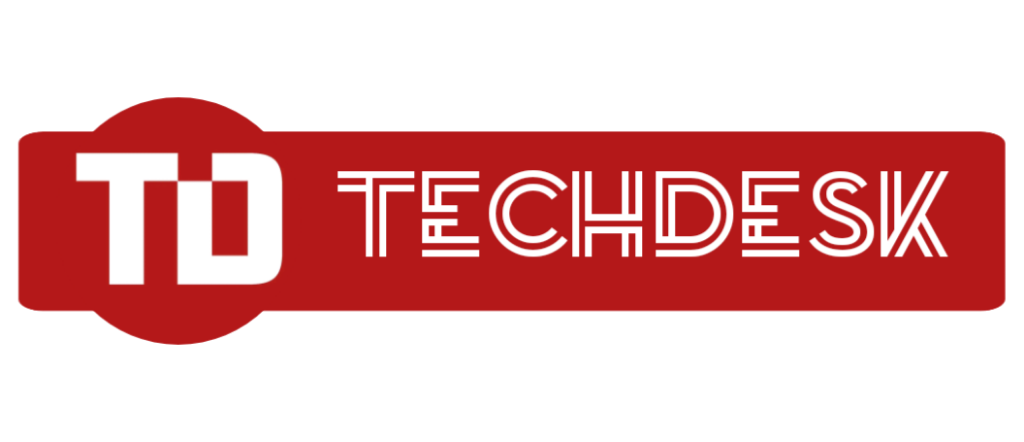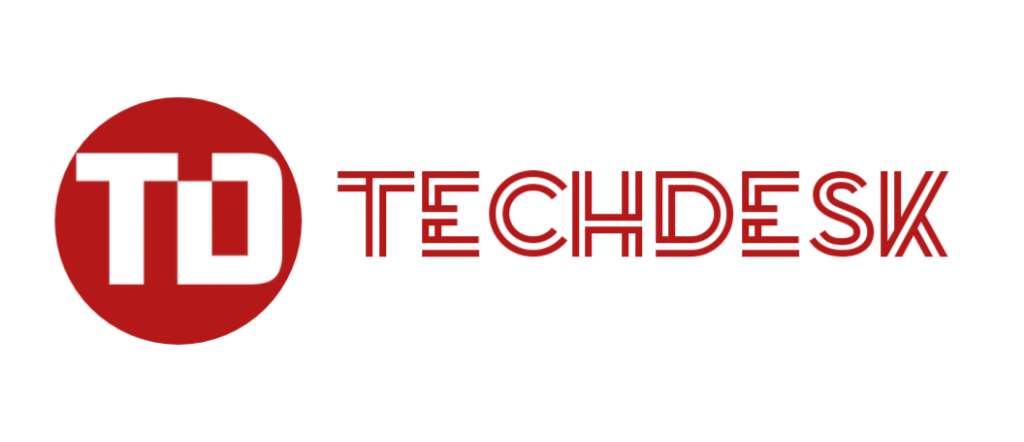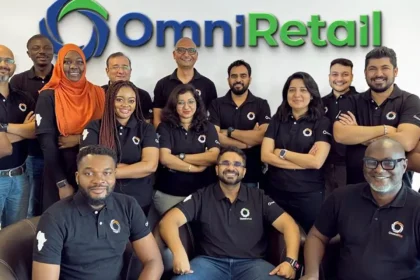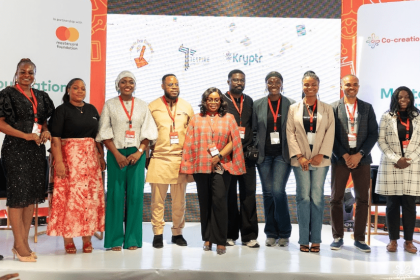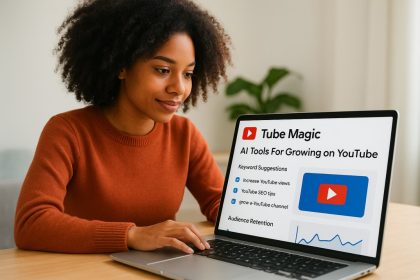
Content marketing has changed a lot recently, with artificial intelligence (AI) becoming a key part of content creation strategies. Marketers and businesses in various industries are finding out that AI tools can completely change how they create interesting, top-notch content quickly and on a large scale.
This is a crucial time for content marketing efficiency, where using the right AI-powered solutions can determine whether you’re struggling to meet content demands or easily keeping a consistent and engaging brand presence across all platforms. The numbers are telling: 75% of marketers are already using AI tools in their work processes, and 19% of businesses have made AI content creation a central part of their marketing strategy.
In 2025, using the right AI tools can greatly improve your content marketing efficiency by automating tasks that take up a lot of time, enhancing the quality of your content, and allowing you to concentrate on strategic creative decisions that lead to actual business outcomes.
In this guide, you’ll find everything you need to know about the best AI tools for content creation in 2025. We’ll cover:
- The most effective AI content creation platforms currently available
- Ways to use these tools efficiently and effectively
- Examples showing how to smoothly incorporate AI into your content processes
- Advice from experts on how to maintain authenticity while increasing your content production
The Rise of AI Tools in Content Creation
AI adoption statistics reveal a dramatic shift in how content creators approach their work. Recent data shows that 75% of marketers have integrated AI tools into their content creation processes, while 19% of businesses have adopted these technologies across their operations. These numbers represent more than just a trend—they signal a fundamental transformation in marketing technology.
The scope of content generation capabilities has expanded beyond traditional text-based applications. Modern AI tools now handle:
- Writing and copywriting for blogs, social media, and marketing materials
- Video production including script generation, editing, and avatar creation
- Audio content such as voiceovers, podcasts, and music composition
- Image generation for graphics, logos, and visual assets
- SEO optimization with keyword integration and performance analysis
This technological evolution is reshaping content workflows across industries. Teams that once spent weeks developing campaigns can now produce high-quality materials in days. Content creators are shifting from purely manual processes to hybrid approaches where AI handles initial drafts, research, and repetitive tasks while humans focus on strategy, creativity, and quality control.
The transformation extends beyond speed improvements. AI tools enable smaller teams to compete with larger organizations by democratizing access to professional-grade content creation capabilities. You can now generate multilingual content, create personalized messaging at scale, and maintain consistent brand voice across multiple channels without proportionally increasing your workforce.
Top AI Tools for Content Creation in 2025
The AI content creation landscape in 2025 offers an impressive array of specialized tools, each designed to tackle specific aspects of your content marketing strategy. You’ll find solutions ranging from comprehensive writing assistants to niche optimization platforms that can transform your content workflow.
1. Jasper.ai
Jasper.ai is one of the most advanced AI writing platforms out there, specifically designed for marketers and content creators who need both speed and quality. This platform excels at understanding your brand voice and maintaining consistency across all your content pieces.
Key Features and Benefits:
- Brand Voice Memory: Jasper.ai learns and remembers your specific brand tone, ensuring every piece of content aligns with your company’s personality
- Marketing-Specific Templates: You get access to over 50 pre-built templates designed for various marketing needs, from blog posts to ad copy
- Long-Form Content Generation: The platform handles comprehensive blog posts, whitepapers, and detailed articles with remarkable coherence
- Multi-Language Support: Create content in 25+ languages, expanding your global reach effortlessly
- SEO Integration: Built-in optimization features help you create content that ranks well in search engines
Real-World Use Cases:
You can use Jasper.ai to turn a simple product description into an engaging 2,000-word blog post in minutes. For example, if you’re promoting a new fitness app, Jasper.ai can generate detailed articles covering workout routines, nutrition tips, and user success stories – all while maintaining your brand’s motivational tone.
Social media managers particularly benefit from Jasper.ai’s ability to create platform-specific content. You can input a single campaign brief and receive tailored posts for Facebook, LinkedIn, Twitter, and Instagram, each optimized for the platform’s unique audience and format requirements.
The platform’s Boss Mode feature allows you to command the AI with specific instructions, such as “Write a comparison between our product and three competitors, highlighting our unique advantages.” This level of control makes Jasper.ai invaluable for creating strategic content that directly supports your business objectives.
2. Copy.ai
Copy.ai is a versatile AI writing assistant designed specifically for marketers who need to produce engaging copy at scale. Unlike Jasper.ai’s focus on long-form content, Copy.ai excels at generating short-form content that converts, making it an ideal companion for social media campaigns and marketing materials.
Key Features That Set Copy.ai Apart:
- Bulk Generation: Copy.ai’s bulk generation capabilities allow you to create dozens of variations for A/B testing.
- Pre-Built Templates: The platform offers pre-built templates for emails, product descriptions, ad copy, and social media posts.
- Brand Voice Customization: With Copy.ai, you can customize your brand voice to maintain consistency across all your content.
- Multi-Language Support: The tool supports multiple languages, making it suitable for global marketing campaigns.
- Integration with Marketing Platforms: Copy.ai integrates with popular marketing platforms for a seamless workflow.
The platform’s strength lies in its ability to generate multiple variations of the same concept quickly. You can input a basic product description and receive 10-15 different versions optimized for different platforms or audiences. This feature proves invaluable when you’re running multiple ad campaigns or need fresh angles for your social media content.
Real-World Applications:
Here are some ways various businesses use Copy.ai:
- E-commerce businesses use Copy.ai to generate product descriptions that highlight key benefits while maintaining SEO optimization.
- Social media managers leverage its Instagram caption generator to create engaging posts that drive engagement.
- Email marketers rely on its subject line generator to improve open rates across their campaigns.
The tool’s bulk generation feature particularly shines when you need to create content variations for different customer segments or test multiple approaches simultaneously.
3. ChatGPT by OpenAI
ChatGPT stands out as one of the most versatile AI tools for content creation, offering conversational AI capabilities that excel at generating human-like text across multiple formats. Unlike specialized tools like Jasper.ai or Copy.ai, ChatGPT provides a flexible platform where you can engage in dynamic conversations to refine your content ideas and explore creative directions.
Key Features and Benefits:
- ChatGPT content ideation through interactive brainstorming sessions
- Real-time conversation flow that helps you develop concepts organically
- Ability to switch between different writing styles and tones within a single session
- Custom GPT creation for specialized content workflows
- Multi-language support for global content strategies
- Integration capabilities with various platforms and tools
Practical Use Cases:
You can leverage ChatGPT to transform a simple blog topic into a comprehensive content strategy. For instance, when creating content about “Best AI Tools for Content Creation in 2025: Tips and Tricks to Maximize Efficiency,” ChatGPT helps you generate multiple angles, create compelling headlines, and develop supporting arguments. The tool excels at producing conversational-style social media posts that feel authentic and engaging.
ChatGPT’s strength lies in its ability to maintain context throughout extended conversations, allowing you to build upon ideas iteratively. You can start with a basic concept and gradually develop it into detailed blog outlines, social media campaigns, or email sequences through natural dialogue.
4. Claude Anthropic
Claude Anthropic is an advanced AI writing assistant that focuses on safety and understanding in creating content. It is a new competitor in the market, offering unique advantages alongside well-known tools such as Jasper.ai, Copy.ai, and ChatGPT.
Key Features:
- Constitutional AI approach: ensures reliable, ethical content generation
- Extended context window: handles complex, long-form writing projects with remarkable coherence
- Advanced reasoning capabilities: produce thoughtful analysis and detailed explanations
- Brand-sensitive content creation: maintains consistent tone and messaging across projects
Applications for Content Creators:
You can use Claude for research-intensive articles that need in-depth analysis and factual accuracy. The tool is great at breaking down complex information into easy-to-understand content while keeping your brand voice intact. Content marketers find Claude especially useful for thought leadership pieces and white papers where depth and credibility are crucial.
Claude’s strength lies in producing nuanced, contextually aware content that feels authentically human. Unlike simpler AI tools, it understands subtle requirements and delivers content that requires minimal editing for professional publication.
5. Surfer SEO
Surfer SEO changes the way you optimize content for search engines by connecting AI-generated writing with SEO performance. This data-driven platform analyzes top-ranking pages to provide specific recommendations for keyword density, content structure, and semantic optimization.
Key Features:
- Content Editor: Real-time SEO scoring as you write, with keyword alignment suggestions
- SERP Analysis: Detailed competitor research showing what works for top-ranking pages
- Keyword Research: Identifies related terms and semantic keywords to boost topical authority
- Content Audit: Evaluates existing content performance with actionable improvement recommendations
When you combine Surfer SEO with Jasper.ai or Copy.ai, you create a powerful workflow. Generate your initial draft using these AI writing tools, then refine it using Surfer’s optimization guidelines. The platform’s keyword alignment feature ensures your AI-generated content targets the right search terms while maintaining natural readability.
You can input your target keyword, receive a detailed content brief, and watch your SEO score improve as you implement Surfer’s suggestions. This combination speeds up both content creation and search visibility.
6. Canva’s AI Logo Generator Tool
While text-based AI tools like Jasper.ai, Copy.ai, ChatGPT, and Claude Anthropic are great for writing blogs, social media posts, and long articles, visual branding is just as important for successful content marketing. Canva’s AI Logo Generator fills this gap by turning simple text descriptions into professional logo designs in seconds.
This innovative feature uses artificial intelligence technology to understand your brand descriptions and instantly create multiple logo options. All you have to do is describe your business, preferred style, or industry, and the AI will generate customized logos that match your vision.
Key features that complement writing assistants:
- Instant brand identity creation for content campaigns developed with Jasper.ai or Copy.ai
- Multiple design variations allowing you to test different visual approaches
- Seamless integration with Canva’s existing design ecosystem
- Brand consistency tools that maintain visual coherence across all content formats
When you’re developing content strategies using Surfer SEO for optimization, having matching visual elements created through Canva’s AI ensures your brand maintains professional consistency across written and visual content channels.
Tips to Maximize Efficiency Using AI Tools
Integrating AI workflows into your content creation process requires strategic planning and thoughtful execution. You need to match each tool to its optimal use case – Jasper.ai excels at long-form blog content, while Copy.ai delivers superior social media copy, and Synthesia handles video production seamlessly.
Keyword research forms the foundation of effective AI content generation. You should conduct thorough SEO analysis before feeding prompts to your chosen AI tool. This approach ensures your AI-generated drafts align with search intent and target audience needs. Tools like Surfer SEO complement writing assistants by providing data-driven keyword recommendations that boost content relevance.
Human oversight in content creation remains non-negotiable. You must review, edit, and refine AI outputs to maintain your brand voice and ensure accuracy. AI tools serve as powerful assistants that accelerate your workflow, not replacements for creative thinking and strategic decision-making.
Audience-centric strategies drive successful AI implementation. You should clearly define your target demographics, preferred content formats, and communication style before selecting tools. This clarity helps you choose the right combination of AI solutions – perhaps Murf.ai for voiceovers targeting podcast listeners, or Canva’s AI features for visual content aimed at social media audiences.
The key lies in creating structured workflows where AI handles repetitive tasks while you focus on strategy, creativity, and quality control.
Challenges and Limitations of AI Content Creation Tools in 2025
Despite their impressive capabilities, AI content creation tools face significant hurdles that you need to understand before integrating them into your workflow.
1. Creativity limits in AI
One of the most persistent challenges is the limitation of creativity in AI. These tools often produce formulaic content that lacks the nuanced thinking and original perspectives that human creators bring to the table.
2. Tone inconsistency
Many AI-generated pieces suffer from tone inconsistency, especially when you’re trying to maintain a specific brand voice across multiple content formats. You might notice that your AI tool produces professional copy in one instance and overly casual content in another, even with identical prompts and settings.
3. Reliability concerns
AI tools can generate factually incorrect information or misinterpret context entirely, which requires constant human oversight. You’ll find yourself spending considerable time fact-checking and verifying claims, particularly when dealing with technical topics or current events.
4. Plagiarism risks
The plagiarism risks associated with AI content creation pose serious ethical and legal challenges. These tools draw from vast datasets that may include copyrighted material, potentially exposing you to intellectual property violations without your knowledge.
5. Misinformation concerns
Another critical concern is misinformation, as AI systems can confidently present false information in convincing formats. You must implement robust verification processes to ensure accuracy, particularly when creating educational or news-related content that your audience relies upon for factual information.
Future Outlook for AI in Content Marketing
Understanding and Generating Content
The future trends shaping AI content creation beyond 2025+ point toward revolutionary improvements in how these tools understand and generate content. Machine learning algorithms are rapidly evolving to better grasp nuanced contexts, cultural references, and brand-specific messaging requirements. You can expect AI systems to develop more sophisticated emotional intelligence, enabling them to craft content that resonates authentically with diverse audiences while maintaining consistent brand voice across all touchpoints.
Integrated Platforms
Integrated platforms are emerging as the dominant force in content workflows, combining text generation, image creation, video production, and audio synthesis into unified ecosystems. These comprehensive solutions eliminate the need to juggle multiple tools, allowing you to create multimedia campaigns from a single interface. Companies like Adobe, Canva, and emerging startups are building these all-in-one platforms that seamlessly transition between content formats while maintaining design consistency and brand alignment.
Balancing Automation Speed with Strategic Impact
The industry is witnessing a critical shift toward balancing automation speed with strategic impact. Smart content marketers are learning to leverage AI for rapid ideation and draft creation while preserving human oversight for strategic decision-making and creative direction. This hybrid approach ensures you maintain competitive advantages through faster content production without sacrificing the thoughtful planning and authentic storytelling that drives meaningful audience engagement and business results.
Conclusion
The best AI tools for content creation in 2025 offer a game-changing opportunity for your business. With powerful solutions like Jasper.ai, Copy.ai, ChatGPT, and Claude Anthropic at your disposal, you can transform your content workflows. These tools don’t replace your creativity—they enhance it.
Success lies in adopting structured workflows that combine AI efficiency with human oversight. You should establish clear processes for research, drafting, editing, and quality control. This approach ensures you maintain authenticity while significantly speeding up your output.
The key is finding the right balance for you. Use AI tools to handle repetitive tasks, generate initial drafts, and optimize for SEO. Reserve your human touch for strategic decisions, brand voice refinement, and creative direction. This combination delivers the speed you need without compromising the quality your audience expects.
Start small with one or two tools that fit your immediate needs. Experiment with different methods, track your results, and gradually expand your AI toolkit. By consistently applying these tips and tricks, you’ll see a significant improvement in your content marketing efficiency.
FAQs (Frequently Asked Questions)
What are the top AI tools for content creation in 2025?
The top AI tools for content creation in 2025 include Jasper.ai, Copy.ai, ChatGPT by OpenAI, Claude Anthropic, Surfer SEO, and Canva’s AI Logo Generator. These tools cover a wide range of functions from writing blog posts and social media content to SEO optimization and logo design.
How can Jasper.ai enhance my content marketing efficiency?
Jasper.ai helps generate high-quality written content quickly and efficiently, making it ideal for blog posts and social media content. Its key features streamline content creation workflows, allowing marketers to produce engaging material faster and with greater consistency.
What role does Surfer SEO play in AI-assisted content creation?
Surfer SEO is an essential tool for optimizing written content for search engines. It complements AI writing assistants like Jasper.ai and Copy.ai by aligning keywords effectively, boosting the relevance and visibility of your content in search results.
How can I maximize efficiency when using AI tools for content creation?
To maximize efficiency, select the right AI tool based on your specific task (writing, video, audio), integrate keyword research with AI-generated drafts to enhance relevance, maintain human oversight to ensure authenticity, and adopt audience-centric strategies that resonate with your target market.
What are some challenges associated with AI content creation tools in 2025?
Common challenges include limited originality and creativity in AI-generated content, reliability issues requiring human intervention to ensure quality, risks of plagiarism, tone inconsistency, and ethical concerns surrounding misinformation and authenticity.
What does the future hold for AI in content marketing beyond 2025?
Future trends point towards advancements that improve creativity and contextual understanding within AI tools. There will be a growing emphasis on integrated platforms capable of multi-format content generation, balancing automation speed with strategic impact to enhance overall marketing effectiveness.
